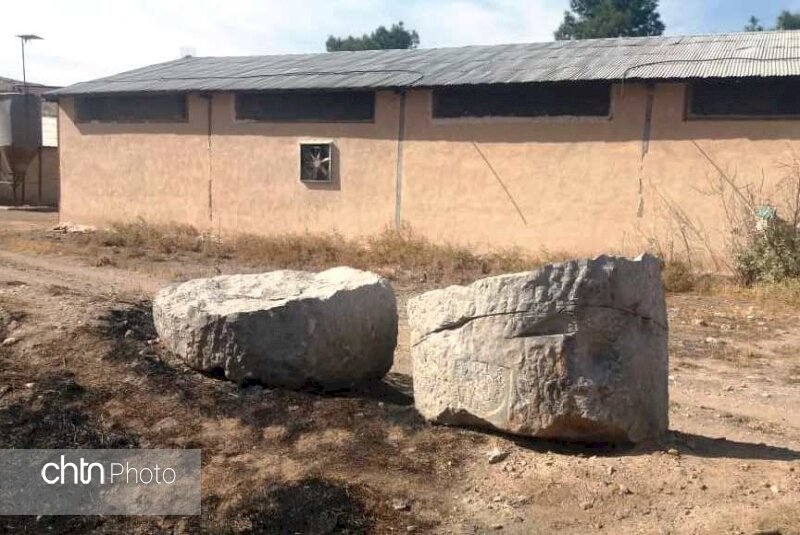Stolen bas-relief discovered in southern Iran

TEHRAN – Massive pieces of stolen bas-relief carving have recently been found in the Marvdasht plain, which is home to the UNESCO-registered sites of Persepolis and Pasargadae as well as tens of other magnificent structures, in southern Fars province.
The Sassanid artwork named Farrokhzad inscription was originally discovered along with similar ones at the foot of Rahmat Mountain in southern Iran, a senior police official in charge of protecting cultural heritage announced on Sunday.
“The bas-relief that has recently been broken in half was originally installed near the ancient city of Istakhr… However, its inscriptions are almost intact,” Mohammadreza Bahmani said on Sunday.
Istakhr, was once a royal residence for Sassanid kings of Persia. It is deeply rooted in history with a human occupation dating back to the fourth millennium BC, and the site was certainly occupied in the Bronze Age, by the Achaemenids, by the Seleucids (who used it as a mint town), and by the Parthians.
The city, which had strong walls, repulsed the first Arab attack in c.644, but was captured and sacked in c.650. Although the site was not really abandoned, most people moved to Shiraz (which was founded in 684). Once, as an Islamic town, it was enclosed by fortification walls with rounded towers.
Today, Istakhr is nothing but a plain full of sherds, scattered architectural remains, and a few ruins. The walled-in area measured 1,400 x 650 meters and was surrounded by a ditch that was connected to the river Pulvar.
Under the Sasanians, Iranian art experienced a general renaissance. Architecture often took grandiose proportions, such as the palaces at Ctesiphon, Firouzabad, and Saravan.
The ancient region, known as Pars (Fars), or Persis, was the heart of the Achaemenid Empire founded by Cyrus the Great and had its capital at Pasargadae. Darius I the Great moved the capital to nearby Persepolis in the late 6th or early 5th century BC. Alexander the Great defeated the Achaemenian army at Arbela in 331 and burned Persepolis apparently as revenge to the Persians because it seems the Persian King Xerxes had burnt the Greek City of Athens around 150 years earlier.
Persis became part of the Seleucid kingdom in 312 after Alexander’s death. The Parthian empire (247 BC– 224 CE) of the Arsacids (corresponding roughly to the modern Khorasan in Iran) replaced the Seleucids' rule in Persis during 170–138 BC. The Sasanid Empire (224 CE–651) had its capital at Istkhr. Not until the 18th century, under the Zand dynasty (1750–79) of southern Iran, did Fars again become the heart of an empire, with its capital at Shiraz.
ABU/AFM
